Radium Profiles for LED strips




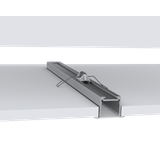
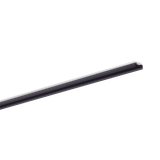
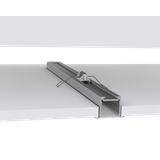
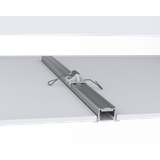
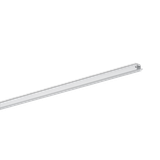
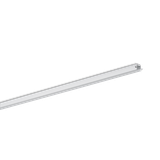
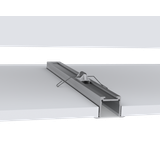


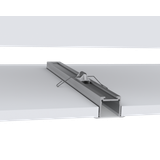

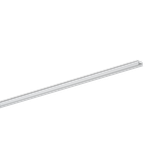
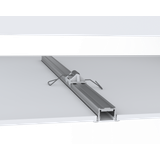
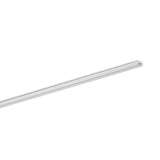
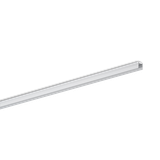
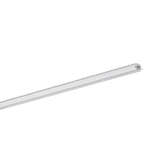

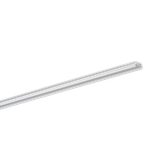
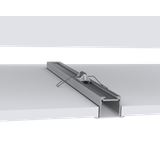
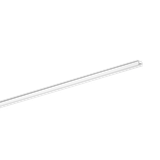


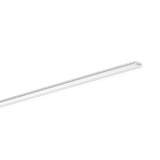
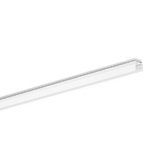
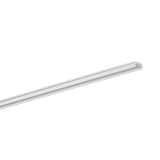
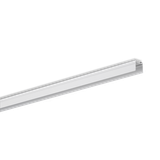
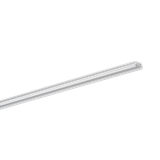
Radium profiles for LED strips in professional interiors
Aluminum profiles turn flexible tape into a finished luminaire: straight sightlines, consistent diffusion, and predictable thermal behavior. Specifiers use Radium channels to hide dots, manage heat at higher watt densities, and keep maintenance simple in coves, shelves, worktops, and architectural reveals. This category covers recessed, surface, corner, plaster‑in, and pendant formats with matching diffusers and mounting hardware.
Product range and series overview – radium led strip profiles
The range typically splits into:
- Recessed profiles: for millwork and gypsum; shallow (flush look) and deep (stronger diffusion/UGR) beds. Plaster‑in variants use perforated flanges for seamless edges.
- Surface channels: low‑profile bars for shelves and under‑cabinet runs; deep options to hide diode imaging on 120–180 LED/m tapes.
- Corner profiles (30°/45°): aim light across backsplashes and display cases; internal reflectors keep cut‑off tidy.
- Pendant profiles: up/down distributions for reception desks and circulation; wire‑suspension with straight joiners for long lines.
Widths accommodate common strip sizes 8/10/12/16 mm; choose depth and diffuser type (opal, micro‑prismatic, clear) to balance luminance comfort and efficiency. For outdoor edges or damp rooms, select gasketed lids and sealed end‑treatments paired with IP‑rated tapes.
Technical specifications and standards – radium aluminum channels for led strips
- Material & finish: extruded 6063‑T5 aluminum for thermal conductivity and straightness; natural anodized or powder‑coat (typ. RAL 9003/9005). End faces are machined for clean joins over long runs.
- Lengths & joining: stock 1/2/2.5 m with straight and angle joiners; cut on site with non‑ferrous blades to preserve anodize.
- Diffusers: opal for dot‑free lines, micro‑prismatic for glare control, clear for maximum lm output. Match diffuser thickness to channel depth to avoid Moiré on coarse‑pitch strips.
- Thermal path: continuous base designed to spread heat from tapes up to ~20 W/m (check datasheet per channel). Use thermally conductive tape or paste; adhesive backing alone is not a heat sink.
- Ingress & impact: indoor assemblies are IP20 at profile level; outdoor kits use seals to reach IP65/67 when combined with sealed strips and end‑treatments. Impact resistance depends on diffuser material (PC for toughness, PMMA for clarity)
- Standards context: profiles integrate into luminaires built to EN/IEC 60598‑1; glare control may follow project UGR targets. Cabling through profiles should respect EN 62444 strain‑relief classes.
Field practicality: keep a 2–3 mm reveal from diffuser to adjacent surfaces to avoid rattle after thermal cycling. Miter corners with backing plates to keep edges crisp.
Applications and compatibility – radium mounting profiles led
- Retail coves & shelves: deep channels + opal diffusers eliminate spotting on glossy merchandise.
- Hotels & residential‑style hospitality: plaster‑in for seamless lines in headboards and corridors; micro‑prism keeps perceived brightness comfortable.
- Worktops & task zones: clear or semi‑opal to maximize lux on the plane; add corner profiles to cut veiling reflections.
- Stair treads & handrails: narrow channels with tough PC diffusers; verify anti‑slip and mechanical protection.
- Outdoor edges & façades: gasketed assemblies with sealed tapes; specify UV‑stable materials.
Coordinate strip width, watt density, and driver location early. For runs over ~5 m at higher power, feed from both ends or centrally to minimize voltage drop and gradient.
Integration with other Radium products
Profiles pair with Radium constant‑voltage drivers (12/24 V) and flexible tapes from the same family to guarantee tint and dimming consistency. Use matching corner/straight joiners and mounting clips from the ecosystem to simplify installation across long corridors. For systems with scenes, sit drivers behind DALI or 0–10 V gateways to keep low‑level flicker aligned between channels.
Where specifications call out premium diffusion, reference radium diffuser channels for led to obtain dot‑free lines at lower mounting depths without jumping to very high LED densities.
Selection criteria for B2B clients
- Optical outcome: choose diffuser (opal/micro‑prism/clear) and channel depth to hit UGR and uniformity targets.
- Thermal budget: match channel base mass to strip wattage; anything above ~10 W/m should sit on aluminum with a conductive interface.
- Width & clearances: confirm strip width (8/10/12/16 mm), connector height, and space for corner turns.
- Run strategy: plan feed points and voltage to control drop; set joint locations away from sightlines.
- Environment: indoors vs damp/outdoor dictates seals, diffuser material, and fastener grade.
Procurement often standardizes one surface, one recessed/plaster‑in, and one corner profile family to cover 90% of locations with minimal spares.
Advantages of working with Bankoflamps
- Individual B2B pricing and custom offers aligned to rollout phases.
- Personal account manager for samples, submittals, и logistics.
- Real‑time stock visibility across EU warehouses.
- Quick quote response (~1 hour) to meet tender windows.
- Fast order placement by EAN/MPN with clean traceability.
- Downloadable, always up‑to‑date price lists for ERP syncing.
- Lead‑time tracking and order status updates for site scheduling.
- Purchase‑history access and analytics to consolidate SKUs.
- Post‑payment (up to 30 days) for trusted clients.
- Consolidated shipment management to reduce freight cost.
Stable pricing with validity dates; we serve France, the Baltics, Germany, Spain, Italy, Belgium, and the Netherlands.